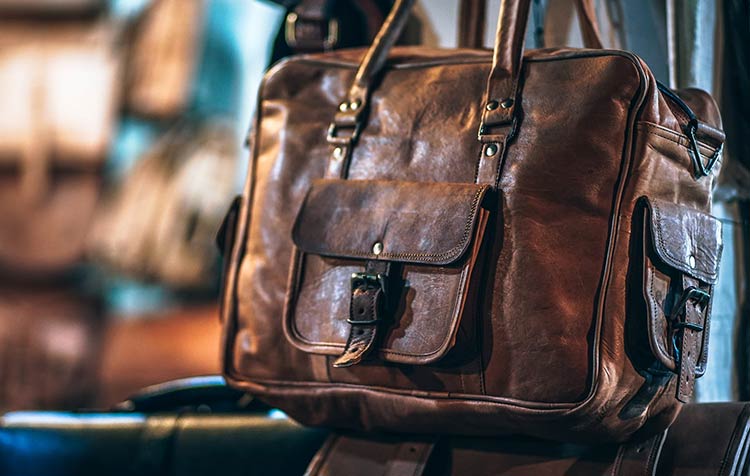At first glance, one could certainly assume that leather is sustainable and that its production is a natural process. Especially since leather is a natural material and occurs as a byproduct of the meat industry. But it is worth questioning these thoughts.
In this article I show youwhether leather is sustainable and how the production has an impact on the environment and which vegan leather alternatives are available. The material can be made from an incredible variety of raw materials, such as pineapple leaves or even paper. In addition, you'll also learn about some upcycling projects that create wonderful leather alternatives. Let's go!
Tip: If you need some inspiration in the fight against cruelty to animals you can use, just have a look at the post about Animal welfare quotes.
Consequences of leather production for the environment
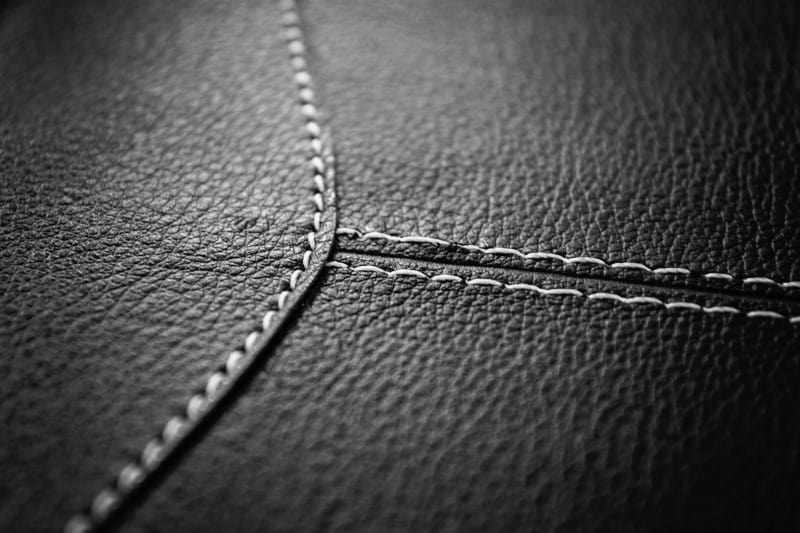
Leather consists of animal skin, which must be chemically processed so that it does not rot. After all, this is dead tissue. How this and other chemical processing pollute the environment and whether leather is really just a byproduct of meat production, I would like to describe in more detail.
Whether in the factory or during transport there - the production of leather unfortunately produces a lot of pollutants that burden our environment and also our health.
Preservatives during transport
Before the hides are processed, they must be transported. So first, the animal hides are processed with preservatives so that the animal hide does not start to decay. Then the hides are transported to the leather producer.
Chemical tanning
A major problem in leather production is tanning, which is usually done chemically. Chromium III salts, which are basically harmless to health, are mostly used for this purpose. In contrast, chromium VI, which is banned in Germany, is harmful to health and can occur if tanning conditions are improper. However, this should not happen under normal circumstances. On the other hand, especially in emerging Asian countries, working conditions are poor and production processes can hardly be traced or controlled.
Fats with high levels of unsaturated fatty acid additionally increase the likelihood of chromium VI formation when tanned with chromium III. To avoid this, one could switch to a vegetable (plant-based) tanning process instead.
High water consumption in leather production
Another negative environmental impact in leather production is the large amounts of wastewater. During the production process, approximately 20,000 to 80,000 liters of water are required for each ton of hide processed. The numbers vary greatly depending on the production process, but either way it is a huge amount of wastewater.
Tip: In the contributions "Vegetarianism Statistics." and "Veganism Statistics" you will find facts and figures about vegan-vegetarian nutrition and its impact.
Harmful substances during the finishing of the leather
One of the last production steps in leather production is the final finishing. This involves coating the leather with plastics, such as polyeruthane, to cover irregularities and seal the leather. The problem with this is that the chemicals are then partially re-sprayed. However, this is the only option if you want to achieve a scratch and tear resistant surface. And since most of the demand consists of immaculate shoes, handbags, leather jackets, the leather must be chemically processed.
Dr. Christian Schelle, a pollutant expert from TÜV Rheinland, says that there is no such thing as pollutant-free leather quality based on TÜV tests, as pollutants are always emitted in corresponding tests.
Is vegetable tanned leather sustainable?
For many, vegetable-tanned leather appears to be an ecological alternative to chemically tanned leather, which seems logical at first. Vegetable-tanned leather is leather in which only substances of vegetable origin are used in the tanning process. Vegetable-tanned leather is often marketed as more ecological than chemically tanned leather. The proportion of vegetable-tanned leather worldwide is approximately 5-10%.
However, vegetable tanning is very resource and time intensive. The process takes between 20 and 30 months and approximately 30 kg of bark or 20 kg of fruit or 90 kg of oak wood are used per hide. In addition, the amounts of water used in the process are huge. The duration and resource intensity far outweigh any advantages of gentle tanning, so here too the production of the leather has a negative impact on the environment.
Working conditions in leather production
A large part of the leather is produced in Southeast Asia, since the labor protection laws and also the environmental protection laws are much looser here than in EU countries. In countries like Bangladesh or China, workers often have to carry out chemical processes without protective clothing. Of course, it is not always the case, but child labor can also occur in the leather industry.
Especially since about 90% of all leather tanning is done in India and China, where conditions for workers and the environment are particularly bad. By the way, you are welcome to read the article on Fast Fashion read through.
Another problem, which admittedly does not only affect leather, is that many products labeled "Made in Italy" or "Made in Germany" have long since not actually been manufactured in Italy or Germany. Especially with shoes labeled "Made in Italy", one thinks of high-quality products. However, components are often manufactured abroad, often in low-wage countries, and only the final work steps are then carried out in Italy. Nevertheless, the products may then carry the label "Made in Italy". Here then is simply not really inside what is written on it.
ZDF Documentary Mass-produced leather
The ZDF Documentary Mass-produced leather shows a good overview of the working conditions and production steps in the leather industry. In about 30 minutes you will learn a lot about the product leather and what problems can occur during production.
Animals as commodities - animal ethical aspects of leather production
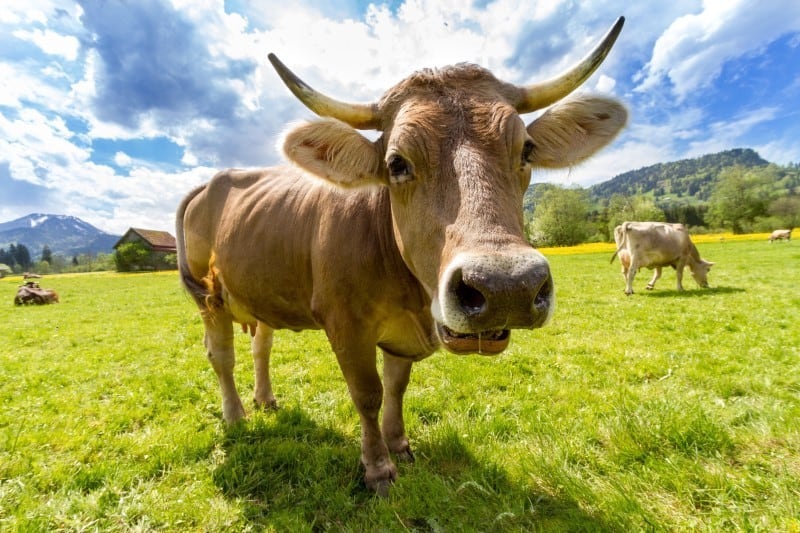
A major fallacy regarding leather sustainability lies in the assumption that leather is only a by-product of the meat industry. According to PETA information, only 60 % of the animal skins used are from the meat processing industry. The remaining 40 % of the world's slaughter for leather is not used for meat, but used exclusively for leather production.
According to research by PETA, the leather of cattle represents about 50 % of the commercial value of a cow, the other half is the cow's meat. Conversely, if no one would buy more leather, consequently the price of meat would have to double. Thus, leather is definitely not simply a by-product or waste product of the meat industry.
Tip: In the article "Why don't vegans wear leather?" you will learn even more about the animal ethical motives.
Environmental impact of the meat industry
Because the leather and meat industries are closely related, the environmental impacts of the meat industry are naturally also linked to the leather industry. The most important factors here are CO² emissions, water and resource consumption, as well as the large amounts of agricultural land required, respectively. Deforestation for feed production.
In the Amazon region in particular, a lot of rainforest is cleared so that large quantities of soy can be grown in monocultures, which are then processed into soy meal and used as animal feed. By the way, over 90 % of soy production is used as animal feed. You can also find out more about this in the clear article on the Environmental problems of our time.
The theme Nutrition and environment has already reached the media and is being discussed more and more often. In the documentary Cowspiracy you can additionally learn a lot about the environmental impact of the meat industry.
Fashion designer Stella McCartney renounces leather and fur
Fashion designer Stella McCartney is primarily concerned with environmental friendliness and animal ethics and works together with the environmental protection organization Parley Ocean Plastic. The organization aims to rid beaches worldwide of plastic waste and reuse it in recycling projects. Fashion designer Stella McCartney uses materials from such recycling projects, among others.
Stella McCartney has also deliberately decided against the use of leather or Fur in her collections. Instead of leather, she uses many recycled fabrics as an alternative. She describes her reasons for this in a wonderfully insightful way in this video.
If you still want to buy leather
If you still want to choose a leather product, I have several recommendations that you can use to make your purchase more sustainable. In my experience, there are now really many good and vegan leather alternatives, but I can understand that as a "non-vegan" you rather stay with what you know and is proven, instead of trying something new. So what can you consider to make your "leather shopping" as sustainable as possible?
Buy leather sustainable second hand
Since leather is a very durable material, you can buy leather products well used. So if you're looking for a sustainable leather jacket, first check out your local second-hand store or online at Kleiderkreisel, eBay Kleinanzeigen etc. and maybe you'll find what you're looking for. This way you save your wallet on the one hand and on the other hand animals and the environment through less new leather production.
Apart from that, we should buy much more second hand anyway, because we reduce the amount of waste and at the same time the resources needed for new productions. So why not also use second hand products for the leather jacket or the purse?
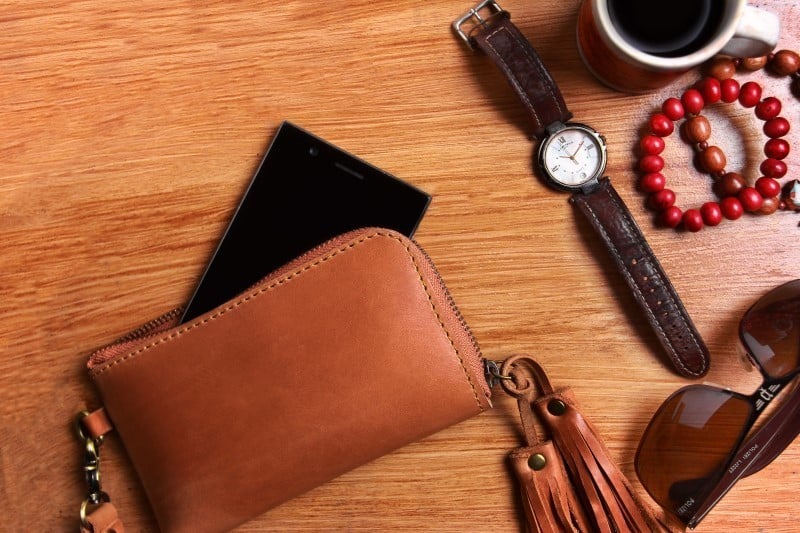
Eco leather and sustainability
The terms eco-leather, natural leather, organic leather are not protected by law and are consequently not used uniformly. Some manufacturers already refer to their leather as natural or organic leather if it has been vegetable-tanned, i.e. purely vegetable-tanned, irrespective of the other production steps. Other manufacturers, on the other hand, describe their leather as natural or organic leather if all production steps have been carried out in the most environmentally friendly way possible. The problem for the buyer here is the lack of transparency and uniformity, because there is no legal regulation.
In the field of natural leather, only the International Association of Natural Textile Industry (IVN) offers an ecological standard. The guideline is relatively strict, which is why relatively few leather producers are IVN natural leather certified so far. However, if you find the IVN seal on a product, it's a sign of fairly produced leather.
Sustainability through transparent leather products
If you want to buy genuine leather products as ecologically as possible, you should take a look at the manufacturing process.
Especially when shopping online, it is often difficult to find out who the leather producer of the offered products is. In the fashion industry, it is often the case that the leather used comes from suppliers in Asia. Here, as already mentioned, unfortunately both weaker environmental protection laws and weaker labor protection laws apply and lower wages are paid than in EU countries.
The problem here is that the production process and its conditions are conditions for the end customer of the leather products are hardly traceable. are hardly traceable. So when you buy leather, you should try to find companies that are transparent about their production process. Then you can information and decide for yourself if you think the leather is sustainable or not. or not.
Unfortunately, you can often find insufficient information here, so once again I would like to recommend you to buy second hand leather products. In the article about sustainable fashion you will get some more basic tips.
Vegan sustainable leather alternatives
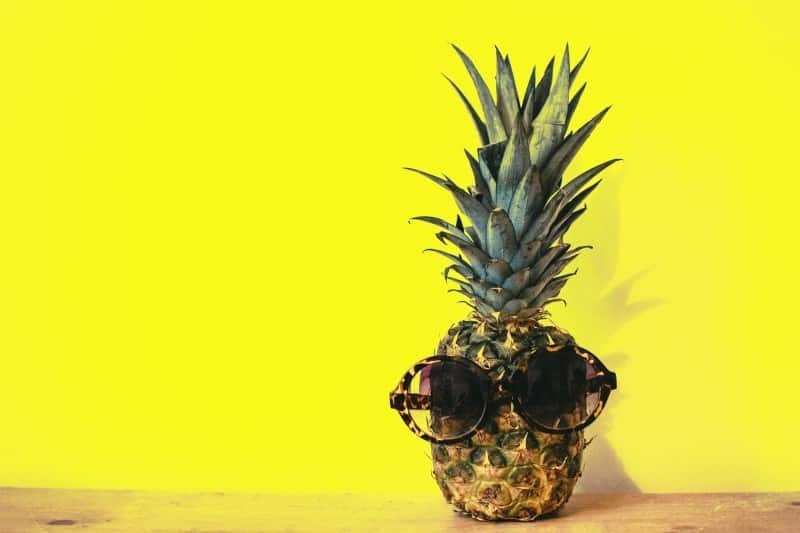
It does not always have to be imitation leather from Plastic There are now many other sustainable projects. These projects have made it their goal to create alternatives to real leather. I would like to introduce some of them here and show you from which material vegan leather can be produced.
There are some exotic materials like pineapple or eucalyptus leaves, but also conventional materials like cork or paper are suitable. By using environmentally friendly materials, the leather is then also sustainable.
For a long time, it was also considered that artificial leather is used in cheap products and is less durable than genuine leather products. However, this has long ceased to be the case, as many vegan leather alternatives have excellent sustainability and durability.
Vegan leather from pineapple leaves
Environmentally friendly leather can also be produced from pineapple leaves. Pineapple leaves - unlike real leather - are definitely a by-product of pineapple processing, and would otherwise end up in the waste garbage can. The vegan leather from pineapple leaves is called Piñatex®. This is an environmentally friendly and vegan leather alternative made from pineapple leaves, polylactic acid and resin.
Vegan leather sustainable from cork
Cork is light, robust, water-repellent and yet still permeable to air. In addition, cork is also sustainable, since it is obtained from the bark bark of the cork tree, and this bark grows again, so cork can be obtained can be obtained in a resource-saving way.
As an alternative to the classic leather wallet you will find here a vegan wallet made from cork*.
Vegan leather from eucalyptus fiber
Eucalyptus can be produced sustainably with little water and energy consumption, offering a good eco-friendly leather alternative. The startup Noani produces vegan leather belts from these eucalyptus fibers and recycled polyester. The use of polyester is not optimal from an environmental point of view, but I find that the Reuse of polyester is better than throwing the material in the trash. Completely in the sense of the Zero Waste Lifestyle even.
Cool leather upcycling projects
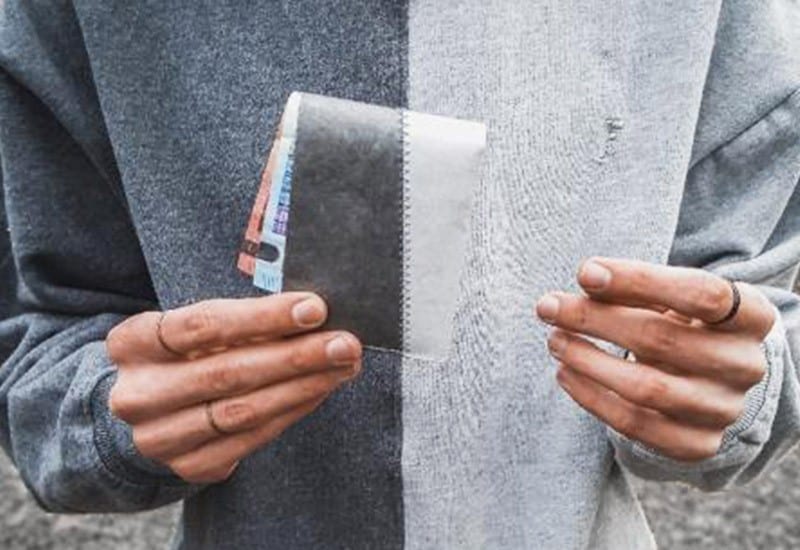
In fashion, upcycling projects are becoming more and more fashionable. I have found in my research several projects that offer environmentally friendly vegan leather alternatives.
Classic upcycling: a Purse from old truck tarpaulin*.
Airpaq - sustainable upcycling backpacks
A play on words from airbag and backpack - Airpaq. The startup produces backpacks and gym bags from waste materials from the automotive industry. The materials either come from the scrap yard or are rejects from an automotive supplier. Instead of ending up in the trash, the material is then further processed at Airpaq.
At Airpaq airbags, old seat belts and even belt buckles are used. Thus, a cool and environmentally friendly backpack or gym bag is created again from actual scrap. Oh yes, no materials from crashed cars are used. To exclude hygienic concerns all fabrics are washed antibacterial at over 90 degrees, belt buckles are cleaned and disinfected separately.
So sounds like a clean deal to me!
FREITAG - Sporty designs
Bags made of truck tarpaulins, that is the concept of FRIDAY. Each bag is unique upcycling, offered laptop bags, backpacks, travel bags and more. Another advantage besides the ecological aspect is that the bags are waterproof.
To make the material softer and more flexible, the truck tarpaulins are combined with a material made of PET bottles.
Vegan alternative for leather shoes
Vegan, sustainable and fair is the philosophy of the online shoe mail order company Avesu for vegan shoes. Here everyone can find an alternative for leather shoes. What I find particularly good is that Avesu has set itself the goal to produce "more than just vegan" and also takes the aspects of ecology and fair production seriously.
I myself have a Chelsea boot from Avesu, which I have now
for over two years now and I am very happy with it.
Vegan leather from paper
There is actually also environmentally friendly leather made paper. Most often, this is a material that is mixed from paper and natural latex is mixed.
Bleed Clothing uses leather from paper & latex
Bleed Clothing produces vegan wallets and belts from a material called Jacroki, which is made of paper and latex and is manufactured in Italy.
I have this belt from Bleed Clothing myself and am very happy with it. At first I found the belt a bit stiff, but that is also the case with leather belts. After wearing it a few times, the material became more flexible. As I've only had the belt since December 2018, I can't say anything specific about its durability at the moment. However, the vegan paper belt makes a really sturdy impression on me.
Paprcuts - Vegan leather from Tyvek
At Paprcuts, watches, wallets, pencil cases, smartphone covers, tobacco pouches and cosmetic pouches are made from a material called Tyvek. Tyvek is vegan, durable and recyclable. The material is made from high-density polyethylene, which is a plastic.
On the one hand, I naturally view the use of polyethylene critically. On the other hand, Tyvek can be reused four to five times and when Tyvek is incinerated under excess oxygen, only water and CO² remain.
Additionally, Paprcuts even has its own recycling program where you can send back your old product. Paprcuts will take care of the proper recycling and you will receive a 25 % coupon for your next purchase.
In addition, the designs of paprcuts are really great, although this is of course a matter of taste. Another advantage is that the purses are printed, folded and sewn in Berlin.
Leather & sustainability - it's possible!

For me personally, the vegan leather alternatives are definitely the most sustainable solution. Because now there is a wide range of different vegan leather alternatives, which can consist of a variety of materials. Especially since pretty much all of them are eco-friendly, many are even upcycling projects. In this respect, vegan leather offers a great alternative to conventional leather.
In comparison, the production of leather is not sustainable. Many pollutants are produced, large amounts of water are used, the working conditions are poor and of course the animal ethics aspect is also important. Unfortunately, leather is not a pure waste product, so the environment is heavily polluted by leather production.
If you still want a leather product, I definitely recommend buying it second hand. Since leather is a quite stable and therefore durable material, you basically can't go wrong with a second hand purchase of leather products from a sustainability point of view. In addition, you still save money while you protect the environment and buy leather sustainably.
Because there are so many modern and eco-friendly leather alternatives, I think you'll find something you like. Maybe your next wallet will be made of paper instead of leather?
Do you have any questions, tips or suggestions? Then feel free to write me a comment below this post.
All the best,

P.S.: If you are more interested in veganism, then check out my articles 11 tips to start vegan or 12 vegan protein sources ahead.

